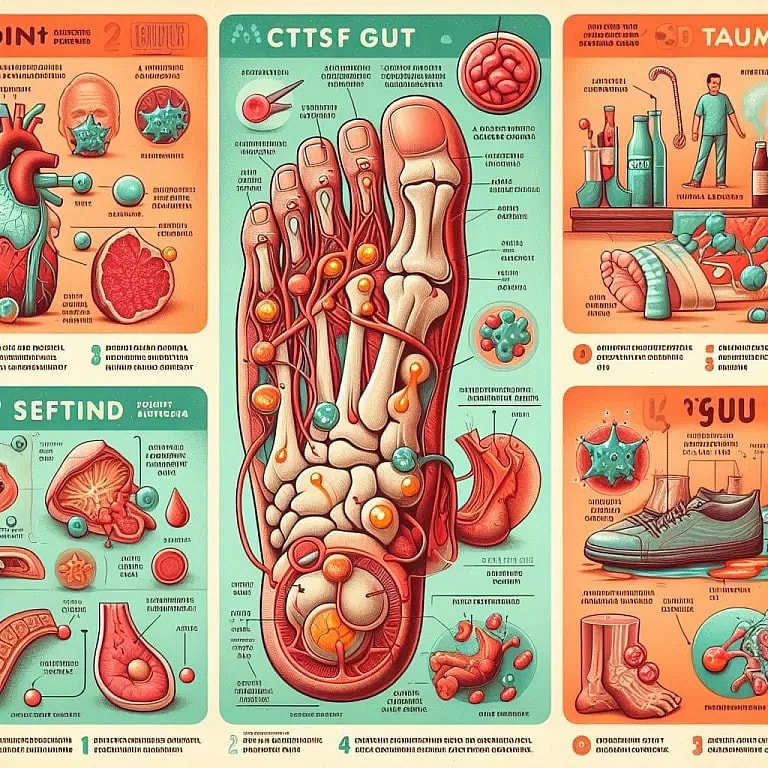Uric acid
**Uric Acid: Understanding and Managing Gout**
Uric acid is a natural substance produced by the body’s breakdown of purines, a chemical found in certain foods. When uric acid levels in the blood become elevated (hyperuricemia), it can form crystals that accumulate in joints, causing inflammation and pain known as gout.
**Understanding Gout**
* Gout is a form of arthritis characterized by severe joint pain, swelling, and redness.
* Uric acid crystals deposit in joint tissues, particularly in the big toe.
* Common triggers include excessive intake of purine-rich foods (e.g., meat, seafood), dehydration, and certain medical conditions.
**Managing Uric Acid Levels**
* **Dietary Modifications:** Limiting purine intake by avoiding high-purine foods and consuming more fruits, vegetables, and low-fat dairy products can help reduce uric acid levels.
* **Medication:** Uric acid-lowering medications like allopurinol or febuxostat can inhibit uric acid production or promote its excretion.
* **NSAIDs and Corticosteroids:** Nonsteroidal anti-inflammatory drugs (NSAIDs) and corticosteroids can reduce pain and inflammation associated with gout attacks.
**Importance of Proper Management**
* Uncontrolled gout can lead to chronic joint damage, kidney stones, and cardiovascular complications.
* Regular monitoring of uric acid levels and adherence to treatment recommendations are crucial for preventing these complications.
* Consult with a healthcare professional for personalized advice on managing uric acid and preventing gout.
Discover the Stages of Gout: A Comprehensive Guide for Pain Relief

There are four stages of gout, a common and often painful condition affecting joints, most often the big toe. Gout is a form of inflammatory arthritis caused by hyperuricemia. Hyperuricemia is a condition that occurs when uric acid builds up…
